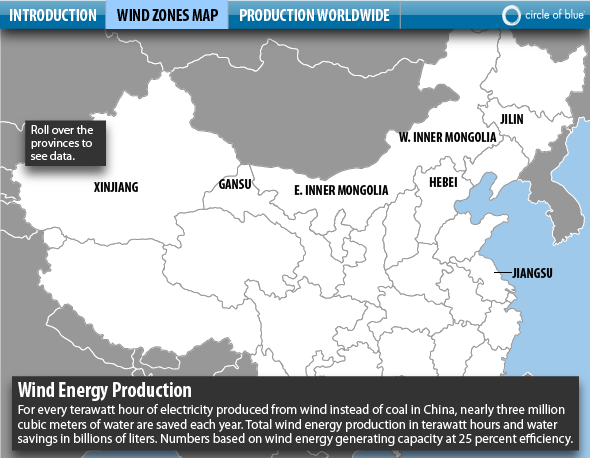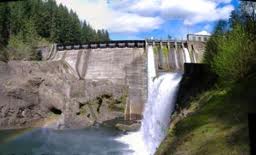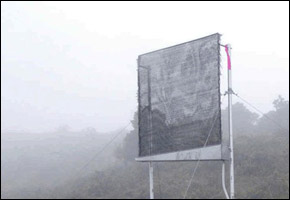Water Scarcity Constrains Food, Energy Security in Vietnam
As the Southeast Asian country battles with climate change, it looks to use less hydropower.

Nearly five inches of rain flooded Hanoi, Vietnam’s capital city, this week, turning its streets to rivers, according to the AFP. The surplus water is a stark contrast to the rampant drought that has been plaguing the Southeast Asian country since September.
While climate change has made temperatures soar and rainfall scarce around the world, Vietnam is one of the most vulnerable countries to its consequences, according to a 2009 report by the Asian Development Bank. The study also indicates that Southeast Asia will be greatly affected by increasing climatic volatility as the frequency and intensity of extreme weather events and precipitation patterns rises.
Declining rice production, rising temperatures, volatile weather and water stress are already causing extensive damage to property, assets and human life in the country.
Food Insecurity
Ongoing drought in Vietnam is constraining the country’s food security, and temperatures reaching upwards of 104 Fahrenheit have further compounded the problem. Roughly 46,000 hectares of cropland in the central north region and more than 25, 000 hectares of rice along the coastal provinces have been affected, the Thanh Nien Daily reports.
Vietnam is the second-largest exporter of rice in the world. The agricultural industry employs more than 22 million Vietnamese. By the end of June over 400,000 tons of rice, worth an estimated $US131.7 million, had been lost, officials told the Thanh Nien Daily. So far the state has granted about $US15 million for drought relief, the Asian Times reports.
The Mekong River Delta Under Threat
The Mekong Delta, the final recipient of the waters from the Mekong River before it empties into the South China Sea, produces more than half of Vietnam’s rice. But the Mekong is the lowest it has been in more than 50 years, Voice of America News reports. Low rainfall has caused increased salinization in the Mekong Delta, and the Ministry of Agriculture and Rural Development predicted in March that more than 100,000 hectares of farmland in the region are in jeopardy.
But sea level changes and increased salinization caused by climate change are not the only threats to the Mekong Delta, which is home to more than 17 million people. China, the uppermost riparian, has plans to build eight dams along the river, just as Lower Mekong basin nations such as Laos, Thailand, Cambodia have also proposed hydropower projects.
“The Chinese dams have made the system fragile, but the impact of the downstream dams will be cumulative,” Marc Goichot, the living Mekong program coordinator of the World Wild Fund for Nature, told the AFP.
Pinaporn Deetes, a spokeswoman for the Save the Mekong Coalition, an alliance of environmental groups, says that the ongoing drought in the Mekong Basin isn’t natural, but instead, the result of China’s construction of dams, which has changed the ecology of the river.
Meanwhile, Jeremy Bird, head of the Mekong River Commission, comprised of Laos, Cambodia, Thailand and Vietnam, refutes such accusations.
“Looking at the flow records that we have, we see no reason to suggest any operation of those projects upstream has made the situation worse. In fact, there’s some evidence to suggest that if those dams had not been in place then the lower water levels may have been experienced even earlier in January,” Bird told Voice of America News.
Drought Spurs Energy Diversification
Like the other nations along the Mekong, Vietnam is dependent on hydropower–generating one-third of its energy from hydropower. As a result drought is effecting food production as well as curtailing energy production.
Hoa Binh is Vietnam’s largest power facility and provides 40 percent of the region’s electricity as well as 15 percent nationwide. Persisting drought threatens to halt its electrical output, according to the AFP.
Meanwhile energy and agricultural sectors are now in competition as they contend for a share of the dwindling supply. According to the AFP, after water was released from the Hoa Binh reservoir to irrigate farm fields, the plant neared the “dead point”- in which electricity output is severely curtailed or halted.
But these conditions have prompted national action to diversify the country’s energy portfolio.
Vietnam broke ground on a 1.2 billion dollar coal-fired power plant last week, and has announced plans to open its first of eight nuclear energy facilities in 2020, the AFP reported.
Read more about the Mekong River and regional drought on Circle of Blue.
Sources: the AFP, the Thanh Nien Daily, the AFP, the ADB, Asia Times Online, the AFP, UNEP, the AFP , Voice of America News, SFGate, the AFP, the Science and Development Network, the Thanh Nien Daily










Leave a Reply
Want to join the discussion?Feel free to contribute!